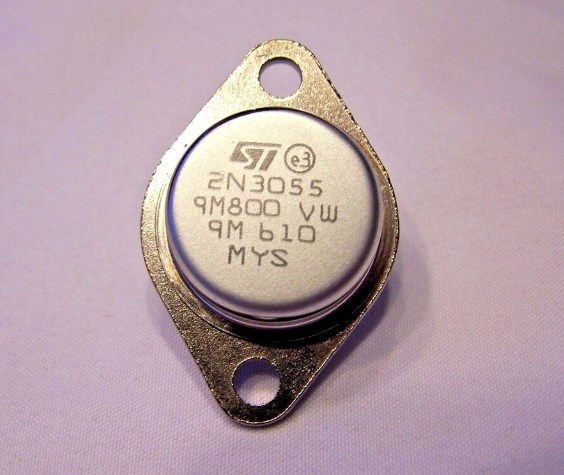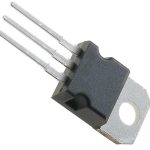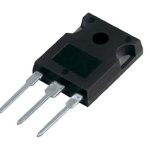The 2N3055 transistor is a widely used power transistor that is capable of handling high currents and voltages. With its robust design and excellent performance, this transistor has found its place in a wide range of applications, including power amplifiers, voltage regulators, and motor control circuits, among others.
In this comprehensive guide, we will delve into the details of the 2N3055 transistor, exploring its structure, operating characteristics, and practical applications, providing valuable insights for electronics enthusiasts and professionals.
Introduction to 2N3055 Transistor

A transistor is a semiconductor device that is used to amplify or switch electronic signals. It consists of three layers of material, each of which has been doped with impurities to create an excess or deficiency of electrons.
The 2N3055 is a power transistor that is widely used in electronic circuits due to its high current and voltage capabilities. It was introduced in the late 1950s by Motorola and has since become one of the most popular transistors in the industry.
Understanding the 2N3055 Transistor
The 2N3055 transistor datasheet provides detailed information about the component’s specifications and characteristics. It includes information such as maximum ratings, electrical characteristics, thermal characteristics, and recommended operating conditions. By examining the datasheet, designers can determine whether the 2N3055 transistor is suitable for their specific application.
2N3055 has a TO-3 package with three pins: emitter, base, and collector. The pinout of the 2N3055 is as follows: the emitter is connected to the metal case, the base is connected to the center pin, and the collector is connected to the outer pin. The configuration of these pins determines how the transistor will function in a circuit.
2N3055 has several important specifications and characteristics that affect its performance in a circuit. These include maximum collector-to-emitter voltage, maximum collector current, maximum power dissipation, and gain. Designers must consider these specifications when selecting a transistor for a particular application.
Applications of the Transistor 2N3055
Common uses
The 2N3055 transistor is commonly used in electronic circuits due to its high current and voltage capabilities. It is often used as a power amplifier, switching device, or voltage regulator. In audio amplifiers, the 2N3055 is used to amplify the signal from a preamp and drive the speakers. It is also used in power supplies to regulate the output voltage and current.
Examples of circuits that utilize the 2N3055 transistor
Circuits that utilize the 2N3055 transistor include power supplies, audio amplifiers, DC-DC converters, motor control circuits, and voltage regulators. In a power supply, the 2N3055 transistor is used to regulate the output voltage and current. In an audio amplifier, it is used to amplify the signal from a preamp and drive the speakers. In a DC-DC converter, it is used to convert a high voltage to a lower voltage. In a motor control circuit, it is used to control the speed and direction of a motor.
Comparison of the 2N3055 transistor with other similar components
Compared to other similar components, 2N3055 has a higher maximum collector current and power dissipation. It also has a higher gain than some other power transistors. However, it may not be suitable for high-frequency applications due to its slow switching speed.
Advantages and Limitations of Transistor 2N3055
The 2N3055 transistor has several advantages when used in electronic circuits. It can handle high currents and voltages, making it suitable for power applications. It also has a high gain, which makes it useful for amplifying signals. Additionally, it is widely available and relatively inexpensive.
However, N3055 has some limitations and challenges that must be considered when designing circuits. It has a slow switching speed, which makes it unsuitable for high-frequency applications. It also has a high saturation voltage, which can lead to power dissipation and heat buildup. Finally, it has a relatively low efficiency compared to other switching devices such as MOSFETs.
2N3055 Equivalent Components
There may be situations where a replacement transistor is needed. There are many equivalent transistors that can be used as a substitute for the 2N3055, including the MJ2955, TIP3055, and 2SC5200. These components have similar specifications and performance characteristics to the 2N3055 and can be used in its place in many applications.
Comparison of the performance and specifications of these equivalent components
- The MJ2955 has a higher maximum collector current than the 2N3055, while the TIP3055 has a lower saturation voltage.
- The 2SC5200 has a higher gain than the 2N3055 and can handle higher power dissipation.
Designers must carefully evaluate the specifications and performance characteristics of the equivalent components to ensure that they will function properly in the circuit.
Factors to consider when selecting a replacement transistor
Factors to consider when selecting a replacement transistor include compatibility with the circuit’s voltage and current requirements, thermal characteristics, and cost. Designers must also consider the availability and reliability of the replacement transistor, as well as any differences in pin configuration or package size.
Troubleshooting and Maintenance of 2N3055

Common issues and problems encountered with 2N3055 circuits include overheating, short circuits, and failure to amplify or switch signals. To diagnose and troubleshoot these problems, designers must first check the circuit for any obvious signs of damage or malfunction, such as burned components or loose connections.
If no obvious issues are found, designers can use a multimeter to test the transistor’s continuity and gain. They can also check the circuit’s voltage and current levels to ensure that they are within the transistor’s specifications. Overheating can be caused by excessive power dissipation, which can be addressed by reducing the load on the transistor or improving the circuit’s thermal management.
To maintain 2N3055 transistor-based circuits, designers should ensure that the components are not subjected to excessive heat or voltage. They should also periodically check the circuit for signs of wear or damage and replace any worn or damaged components. Proper maintenance can help extend the lifespan of the circuit and prevent issues from arising.
Conclusion
2N3055 is a versatile and reliable component that has become a staple in many power-driven electronic applications. Its ability to handle high currents and voltages, coupled with its sturdy construction, make it an exceptional choice for amplification, voltage regulation, and motor control. By understanding the inner workings and characteristics of this transistor, you gain valuable knowledge to design and optimize electronic circuits with utmost efficiency.



